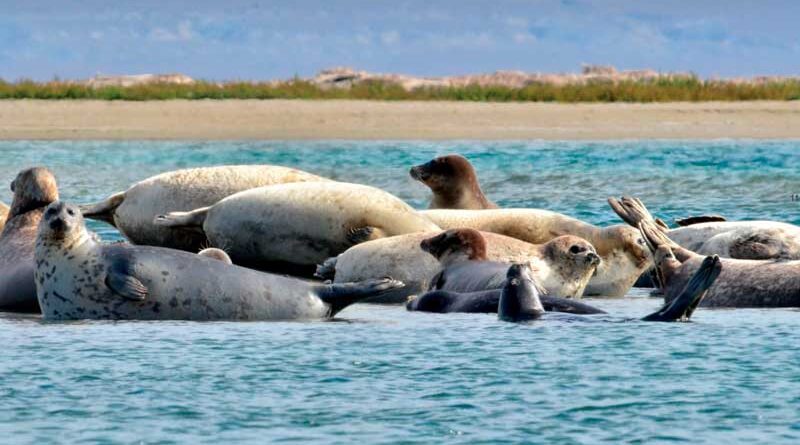In search of the Caspian Seal
Our colleagues from the Institute of Hydrobiology and Ecology, Kazakhstan, created the short documentary film «In Search of the Caspian Seal» about the only marine mammal in the Caspian Sea. Having been researching the Caspian seal for many years, the film authors are concerned about the deterioration of its status and degradation of its habitat, as well as propose a number of effective measures to prevent an environmental disaster associated with decline in its numbers. “If there are not a seal – that means we, people, will face tragic consequences of the sea ecological state deterioration”.
Operators: M.T. Baimukanov, A.T. Baimukanov, T.T. Baimukanov.
Author of the voice-over text (published below): M.T. Baimukanov, Director of the institute, Ph,D. in Biology.
A special feature of the biology of the Caspian seal is it spends half its life in water and half – on land. A decline in the species number in the last century was associated precisely with this feature. People mercilessly killed seals on land. Hauling-out on islands, seals were defenseless and an easy target. Animals was hunted for their valuable blubber and fur. And then the industrial revolution led to the sea pollution; and it was the habitat itself, the Caspian Sea, that led to diseases and a decrease in the reproduction of seals.
The species became endangered.
Researches on the Caspian seal, carried out by an international group of scientists since 2005 in the Kazakhstan part of the sea, made it possible to estimate the species abundance and learn more about its distribution. And the Durnev Islands in the Komsomolets Bay were considered to be major haul-out sites. But the drop in sea level presented another mystery: due to drying out of shallow waters, seals left the Durnev Islands and… disappeared. There were also no seals on the unique Kendirli haul-out site in the Middle Caspian due to various disturb factors: driving seals away from the site, shooting guns, shipping and nearby fishing.
And since 2015, in spring and autumn, search work had been carried out to find seal haul-outs. A variety of equipment was used: helicopters, planes and unmanned aerial vehicles for aerial searches; special vessels for passing through shallow waters.
In the autumn of 2018, it became clear that haul-out sites should be looked for in the region of shalygas in the northeastern Caspian Sea. In 2020 and 2022, the estimated number of seals hauling-out here during their moulting, immediately after the ice melted, was about 60 thousand. And the autumn of 2020 showed that seals chose this sector of the Caspian.
Now we know exactly where seals are concentrated!
But the Caspian regression continues. The sea level has already dropped to 29 meters. Vast expanses of water continue to dry up, and seals are leaving these, once suitable for them haul-out sites. If the level drop continues, where will seals moult and rest? And how will this affect their health and numbers?
One of the major measures to preserve the Caspian seal is the creation of a reserve covering those islands that were haul-out sites for the species in the recent past. It is necessary to ensure that seals return to their original habitats – the Tyuleni Islands and the Kendirli Islands. It is necessary to clear them of marine debris, establish zones and periods of strict protection when seals moult and rest in spring and autumn, and establish ecological corridors when seals migrate across the sea to breed in the Northern Caspian. And in general, create all favorable conditions for restoring the population of the only marine mammal in the Caspian Sea. To do this, it is necessary to protect the species, develop scientific and educational tourism, enlightenment and education of people, improve legislation, develop international cooperation between the Caspian countries, establish constant monitoring and research of the habitat, and prevent further pollution of the sea. We need a national action plan to preserve this unique species. After all, the Caspian seal is an indicator of the state of the Caspian Sea.
If there are not a seal – that means we, people, will face tragic consequences of the sea ecological state deterioration.
In the photo above: Caspian seals on a shalyga in the north-eastern Caspian Sea, Kazakhstan. Author M.T. Baimukanov.

